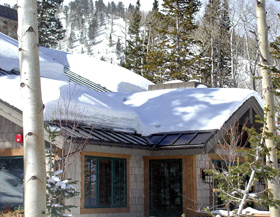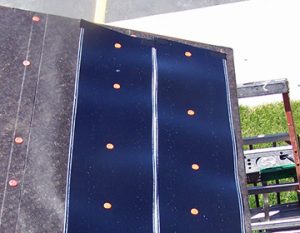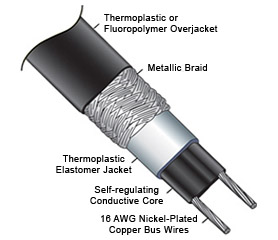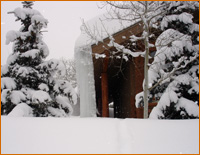Protecting Your Roof and Gutters
With the end of winter and spring approaching many homeowners
may be finding that the harsh winter weather has caused damage to their roof and gutters. Many people don’t give their roofs and gutters a second thought until there is a problem.
Snow and ice can cause damage to roofs and gutters in many different ways. Shingles can come loose due to the contractions and expansion with the change in temperature. Ice dams are the most common problems associated with winter roof damage. A ridge of ice forms at the edge or valley of a roof and prevents the melting snow behind it from draining. The water backs up behind the dam where it freezes and melts again. Eventually water seeps through a weak part of the roof, causing damage to ceilings, walls, and floors, eventually resulting in mold and mildew growth.

Many people don’t realize that they can do something to prevent the damage that winter weather causes to roofs and gutters. Roof heating systems are becoming an affordable and preferred option for many homeowners. A variety of roof deicing systems are on the market today.
Thin RoofHeat STEP low-voltage heating elements can be discreetly installed under the shingles and help to protect your home during the harsh winter months. This system can also be installed to heat metal roofs. Homeowners also have options to protect gutters from breaking due to ice, and also the buildup of icicles, which can be dangerous to homeowners and their families. Gutter trace systems can be installed to prevent structural damage from heavy snow and ice to gutters and downspouts. When it comes to protecting your home, Warmzone offers many roof heating options, each of which can be customized to best meet your needs.
The best time to take preventive measures to guard against future roof damage is in the early spring. With the threat of heavy snow behind, most people are not thinking of what they can do to make next winter easier. This means savvy homeowners can find better deals on installation and pricing in the spring. When shopping for the best roof deicing system homeowners should take into account the following things.
- Ease of installation. You want a system that can be nailed or stapled though and installed and cut to fit onsite, facilitating the ease of installation. Such a system can be significantly less expensive.
- Does the system require maintenance? Electric roof deicing systems are preferable because they are virtually maintenance free, decreasing the cost of yearly up-keep. With an electric deicing system, there is no need for yearly checkups or repair of leaky pipes that may be associated with some hydraulic heating systems.
- Is it a trusted product with a reliable track record? Don’t be afraid to ask questions about the system and the heating element. Find out what other applications it has been used for. Why is it the best system for you?
- Is the roof heating or gutter trace system fully automated? How efficient is it? Look for a system without a bulky housing system. You also want to find a deicing system that is fully automated which will make it more effective in that the energy goes directly to snow melting. (Learn how roof deicing systems work.) This will in turn make the cost of operation per hour less. Probably the most important factor to an efficient deicing system is that it is fully automated. This should be on the top of your list of must-haves from a deicing system. A fully automated system can detect the temperature and moisture in the air, and when conditions warrant, it triggers the control unit. The controller then powers up the heating elements warming your roof and gutters just before the snow storm and then shutting off afterward the storm has passed, resulting in maximum performance.
Installing a roof deicing system is an excellent way to prevent damage to your roof and gutters from winter weather. As long as you know what to look for, it is a safe, affordable way to protect and raise the value of your home.



 RoofHeat deicing cable is part of a fully-automated
RoofHeat deicing cable is part of a fully-automated